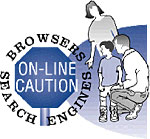
- Students along with Parents should read acceptable use polices (AUPs) and discuss them with each other.
- Time is spent teaching students what it means to comply with AUPs.
- Enforcement of AUPs is flexible enough to allow unintentional violations to be considered teaching opportunities not an automatic occasion for punishment.
- Internet safety instruction is a prerequisite for school provided Internet access.
- Selected older students serve as computer and Internet tutors and guides for younger students.
- The PTA offers programs to parents or guardians who want to know more about Internet safety, and guidance on maintaining open communication between parents and adolescents.
- Internet safety instruction is offered to both parents and children.
- Software is installed to clear browser histories and caches so that a new user can’t view anything seen by a previous user.
- Offer users a variety of choices regarding filtered or unfiltered access
- Information on a library’s filtering policy is conspicuous and available so that users have a general idea of what is blocked.
- Internet-access points inside children’s areas ask the age of the child. Young children receive a notice that they are getting filtered access. Older children are offered an unbiased choice of filtered and unfiltered access (unbiased meaning that neither one is the default).
- Provide parental controls that are easy to understand and use.
- Design and provide educational and child-friendly areas.
- Provide a channel for user complaints about child pornography or obscene material, for example, a link or customer-service page or 1-800 number.
- Refrain from hosting material that they believe to be illegal, such as suspected child pornography.
Makers
- Provide “in-the-box” Internet safety tips and best practices.
- Offer configuration options to accommodate the needs of children in the household. This can include, for example, a step-by-step setup process that helps parents specify certain limits on access for their children.
Content Providers
- Participate in an organized labeling plan, design, or program that can be widely adopted.
- Integrate educational and entertainment value to content developed for children.
- Add links to age-appropriate sexual and psychological health-related content to Web sites that are visited by older youth so that reliable and appropriate information is available.